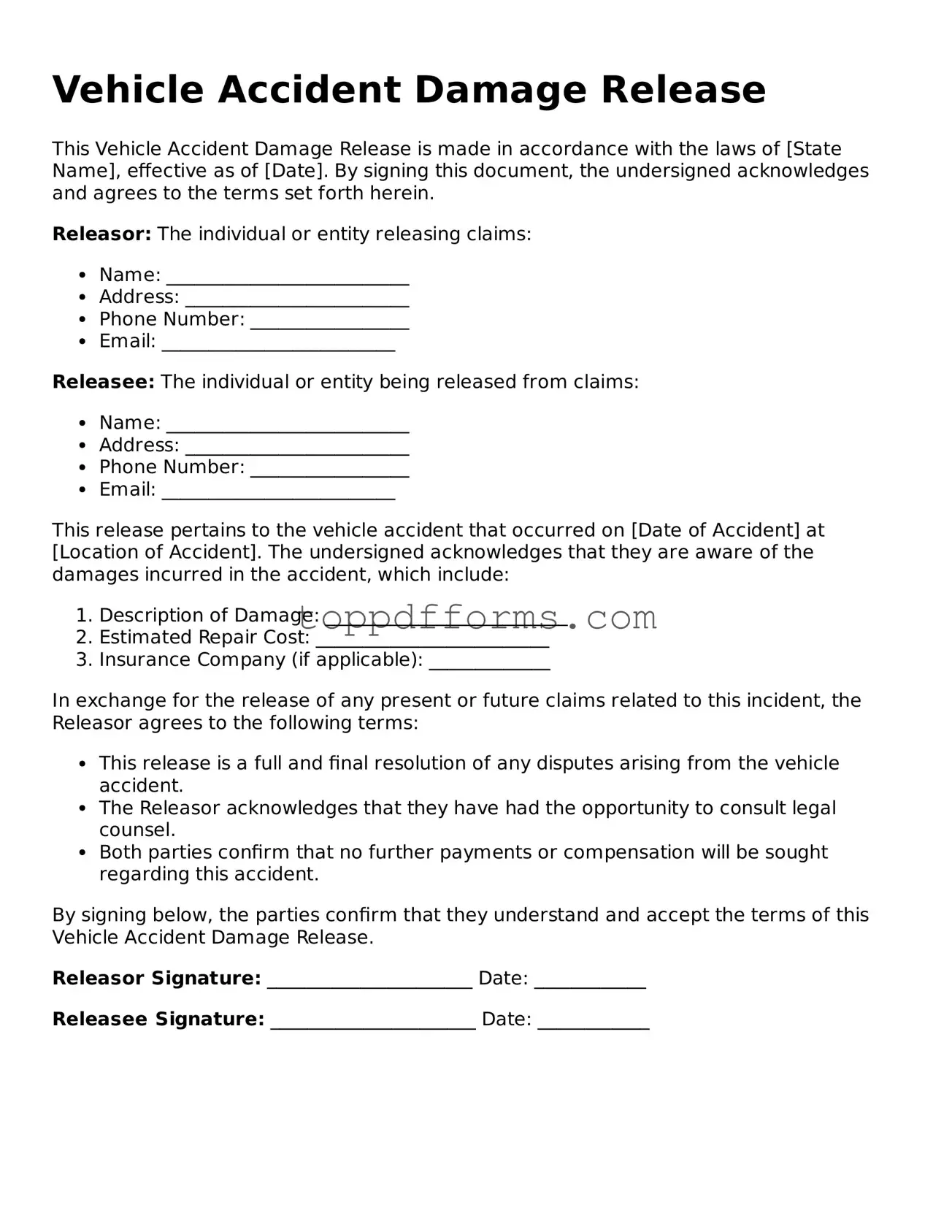What is a Vehicle Accident Damage Release form?
A Vehicle Accident Damage Release form is a legal document that releases one party from liability for damages resulting from a vehicle accident. It is typically signed by the party receiving compensation for damages, indicating that they accept the payment and waive any further claims related to that specific incident.
When should I use this form?
This form should be used after a vehicle accident when one party agrees to settle for damages without pursuing further legal action. It is important to ensure that all damages have been accounted for and that both parties understand the terms of the release before signing.
Who should sign the form?
Both parties involved in the accident should sign the form. The party receiving compensation must sign to acknowledge that they are satisfied with the settlement and agree not to pursue additional claims related to the incident. The party providing compensation also signs to confirm that they have fulfilled their obligation.
What information is required on the form?
The form typically requires basic information such as the names and contact details of both parties, the date of the accident, a description of the damages, and the amount of compensation being offered. It may also include a statement indicating that the signing party understands the implications of releasing the other party from further claims.
Is the form legally binding?
Yes, once signed, the Vehicle Accident Damage Release form is legally binding. This means that the party who signs it cannot later claim additional damages related to the accident. It is crucial to read and understand the document fully before signing to avoid any unintended consequences.
Can I change my mind after signing the form?
Generally, once the form is signed, it cannot be revoked. The purpose of the form is to provide finality to the settlement. Therefore, it is essential to ensure that all concerns and damages are addressed before signing. If there are doubts, consulting a legal professional beforehand is advisable.
What if I feel pressured to sign the form?
If you feel pressured to sign the form, do not sign it. You have the right to take your time to review the document and seek legal advice. It is important to make decisions regarding legal matters without undue pressure, as this can affect your rights and options in the future.
Where can I obtain a Vehicle Accident Damage Release form?
Vehicle Accident Damage Release forms can often be found online through legal websites, or they may be provided by insurance companies. It is advisable to use a form that complies with your state’s laws, or to consult with a legal professional to ensure that the document meets all necessary requirements.
What should I do after signing the form?
After signing the form, keep a copy for your records. Ensure that you have received the agreed-upon compensation before finalizing the release. If any issues arise later regarding the accident, refer back to the signed document to clarify your position.
